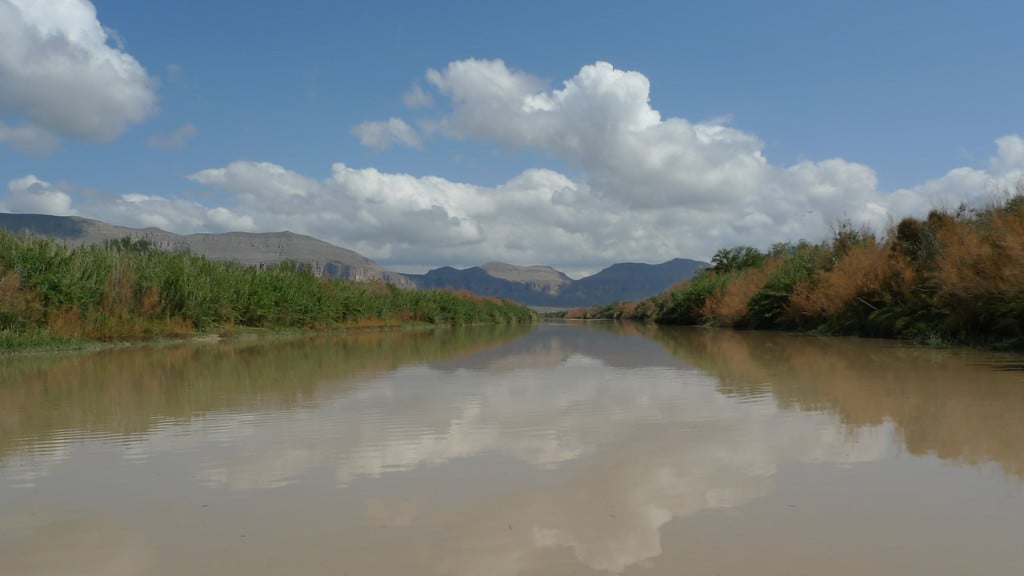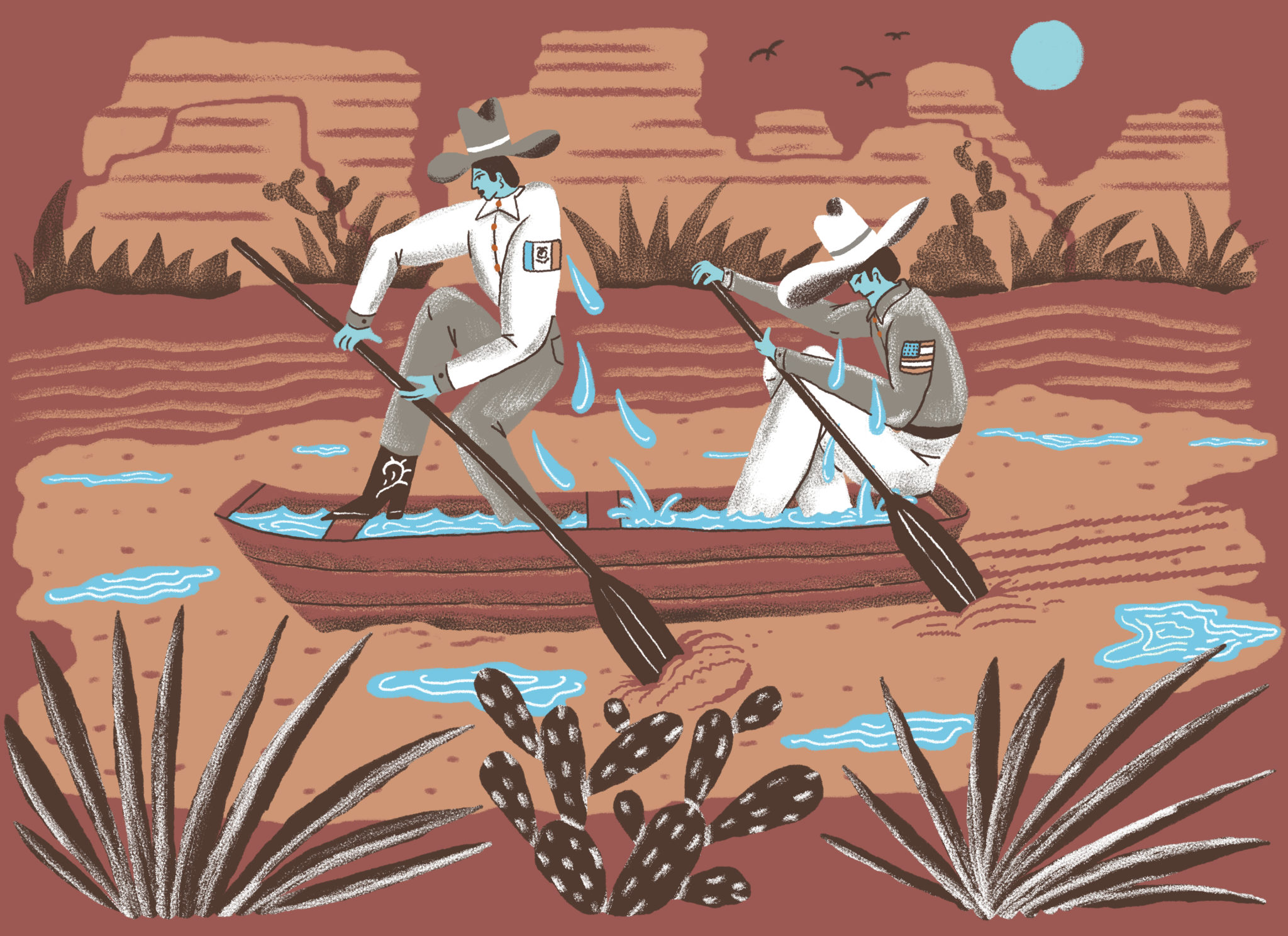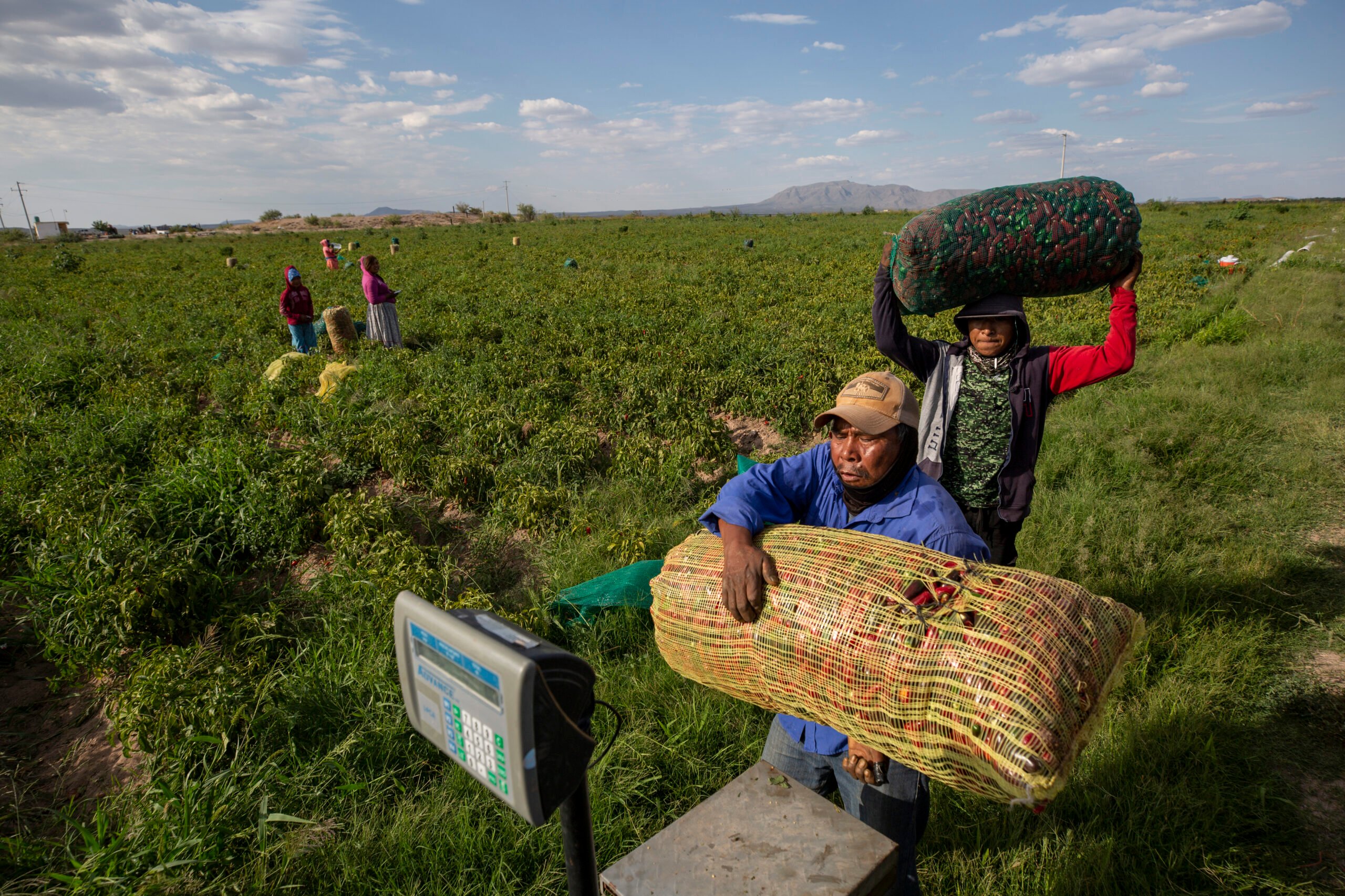
Despite Trump, Water Agency Fosters Cross-Border Cooperation Between U.S. and Mexico
A binational agency is working to transcend the immigration, trade and border wall battle between the two countries.

Above: The Rio Grande

In early March, Ed Drusina and Roberto Fernando Salmón Castelo sat at the back of an almost empty auditorium with plates of food, talking amiably and struggling with plastic knives to cut chicken smothered in a red mystery sauce. The two men are the U.S. and Mexican commissioners of the International Boundary and Water Commission (IBWC), a little-known binational agency that carries out the provisions of U.S.-Mexico water treaties. They had spent the morning giving speeches about the state of the beleaguered Colorado River to a group of academics gathered at the El Paso water utility’s learning center for a summit on shared water resources along the border.
Proud of their latest accomplishment, an agreement to share the Colorado River during drought and to fund conservation measures in Mexico, the commissioners made a show of unity and cooperation between the two countries — at least regarding water. The agreement, called Minute 323 in legal parlance, had been five years in the making, and was negotiated and signed in September, at the height of political tensions between the United States and Mexico. As President Donald Trump was threatening to kick Dreamers out of the country and questioning whether a judge of Mexican ancestry can be unbiased, Drusina and Salmón were hammering out the details of the agreement.
They were under a lot of pressure. The last 18-year period has been the river’s driest in 112 years of record-keeping, and the previous water-sharing pact was set to expire at the end of 2017. Still, despite Trump’s antagonism about immigration and calls to build a border wall, Drusina and Salmón found a way to negotiate a solution.
“We sat at the same table, we shared the same whiskey, and that worked. It’s still working.”
Perhaps fittingly, both men highlighted the importance of a decidedly un-Trumpian virtue at the El Paso conference. “While we had very good science and engineering leading up to Minute 323, possibly our biggest challenge was building trust,” Drusina told the audience. For his part, Salmón emphasized the close relationship the pair had developed over eight years of working together. “We sat at the same table, we shared the same whiskey, and that worked,” Salmón said. “It’s still working.”
The ethos of coming together across borders seems crucial to IBWC’s approach. Since 2006, the commission has worked to identify and research transboundary aquifers. It has prioritized four aquifers — the Santa Cruz and San Pedro in Arizona and the Hueco Bolson and Mesilla Basin in the El Paso area — for study. Both countries have an incentive to work together on understanding groundwater. As water supplies from the Rio Grande dwindle and become unpredictable, in part a result of climate change, residents on both sides of the border will increasingly turn to groundwater.
“You have to have establishment of trust,” said Jacob Petersen-Perlman, a research analyst at the University of Arizona who is involved in the aquifer assessments. “That’s not easily earned and [is] often overlooked. You often have to incorporate the emotions behind these issues and the values each of these parties bring to the table.”
Petersen-Perlman said that when they started out, the two countries didn’t even use the same classification system. Since then, researchers have published a bilingual study on the Arizona aquifers. For now, the two countries are only collaborating on research. Limits on who can pump from the aquifers and how much are a ways away.


